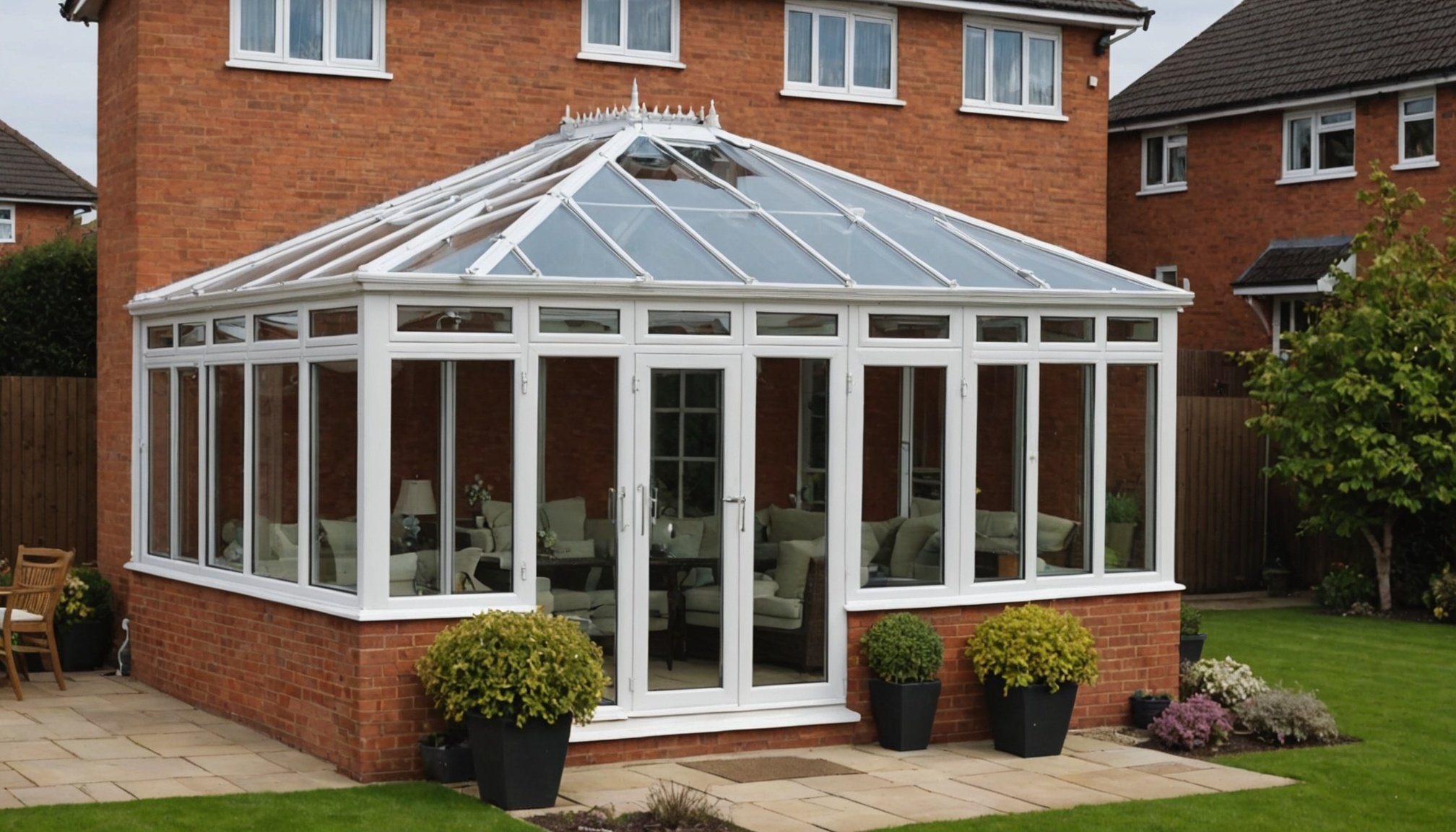Heating your conservatory this winter can be a challenge, but it doesn't have to be. With the right strategies, you can transform your space into a cozy retreat. From choosing the best heating solutions to utilising insulation techniques, effective methods are available to enhance warmth and comfort. Explore these practical tips to ensure your UK conservatory remains inviting, regardless of the chill outside. Don't let winter limit your enjoyment; embrace these approaches for a snug sanctuary all season long.
Effective Heating Systems for Conservatories
When it comes to choosing the right heating systems for your conservatory, there are several options available. Popular choices include electric heaters, radiators, and underfloor heating. Each of these conservatory heating solutions offers unique benefits and drawbacks, making it essential to understand their energy efficiency and cost-effectiveness.
A lire aussi : Transforming Your Modern UK Apartment: Embracing Art Deco Elegance in Contemporary Design
Electric heaters are often favoured for their ease of installation and quick heat-up time. They are ideal for smaller conservatories or those used infrequently. However, they can be less energy-efficient compared to other options, potentially leading to higher running costs.
Radiators, on the other hand, provide consistent warmth and can be integrated into your home's existing central heating system. They are suitable for medium to large conservatories, offering a balance between initial investment and operational cost. The energy efficiency of radiators largely depends on the type of fuel used and the system's overall design.
A lire aussi : Top Non-Slip Flooring Options for Bathrooms in the UK: Discover the Best Materials for Safety and Style
Underfloor heating is a modern and discreet solution, perfect for those seeking an even distribution of heat. While the initial installation cost can be high, it is one of the most energy-efficient systems available, particularly when combined with a smart thermostat. This makes it a cost-effective option in the long term, especially for conservatories that are used regularly.
Experts recommend selecting a heating system based on the size of your conservatory and its intended usage. For smaller spaces or occasional use, electric heaters might be sufficient. Radiators are a versatile option for medium-sized conservatories, while underfloor heating is best suited for larger spaces or frequent use due to its efficiency and comfort level. By carefully considering these factors, you can choose the most suitable heating solution for your conservatory needs.
Insulation Techniques to Retain Heat
Effective insulation methods are crucial in preventing heat loss in conservatories, enhancing overall heat retention and energy efficiency. Proper insulation ensures that the warmth generated by your heating system remains within the space, reducing the need for excessive energy consumption.
Importance of Insulation
Insulation acts as a barrier to heat flow, keeping the warmth inside during colder months and maintaining a comfortable environment. Without adequate insulation, even the most efficient heating systems can struggle to maintain desired temperatures, leading to increased energy costs and reduced comfort.
Types of Insulation Materials
Conservatories can benefit from various insulation materials. Popular choices include:
- Double-glazed windows: These provide an extra layer of protection, significantly reducing heat transfer.
- Insulated roof panels: These are essential for minimizing heat loss through the roof, one of the most significant areas of heat escape.
- Thermal blinds or curtains: These can be easily added to windows to enhance insulation further.
DIY Insulation Tips and Professional Options
For those inclined towards DIY insulation, adding thermal blinds and sealing gaps around windows and doors can be effective. However, for comprehensive solutions, professional installation of insulated roof panels or upgrading to double-glazed windows is recommended. These professional options, while initially more costly, offer long-term benefits in terms of heat retention and energy savings.
Energy Efficiency Tips for Lowering Costs
Enhancing energy efficiency in your conservatory not only reduces environmental impact but also lowers heating costs. Implementing effective cost-saving tips can optimize your heating system's performance and ensure a comfortable environment year-round.
Strategies for Optimizing Heating Usage
To maximize energy efficiency, consider using timers and thermostats. Set a timer to heat your conservatory before use, ensuring warmth without unnecessary energy consumption. Smart thermostats can learn your schedule, automatically adjusting temperatures for optimal comfort and savings. These devices provide precise control, allowing you to maintain desired temperatures efficiently.
Benefits of Energy-Efficient Appliances and Systems
Investing in energy-efficient appliances reduces energy usage and costs. Modern heating systems with high energy ratings consume less power while delivering effective warmth. Consider upgrading to appliances with smart features, such as programmable settings, to further enhance efficiency. These systems not only lower utility bills but also contribute to a sustainable lifestyle.
How to Conduct an Energy Audit for Your Conservatory
Conducting an energy audit helps identify areas for improvement. Begin by inspecting insulation, windows, and doors for any gaps or leaks. Check the efficiency of your heating system and consider professional help to evaluate energy usage patterns. An audit provides insights into potential upgrades and adjustments needed to enhance energy efficiency, ultimately leading to significant cost savings.
Accessories to Enhance Comfort
Enhancing your conservatory with the right conservatory accessories can significantly improve comfort and warmth, particularly during colder months. These comfort enhancements not only add to the aesthetic appeal but also contribute to the overall functionality of the space.
Thermal Blinds, Curtains, and Window Films
Thermal blinds and curtains are effective in reducing heat loss through windows. They act as an additional barrier, keeping the warmth inside and the cold out. Window films can also play a crucial role by reflecting heat back into the room, thus enhancing the insulation properties of your conservatory.
Rugs and Soft Furnishings
Using rugs and soft furnishings is an easy way to increase heat retention. Rugs add an extra layer of insulation to the floor, preventing cold air from seeping through. Soft furnishings like cushions and throws not only provide comfort but also help in maintaining a cosy atmosphere by trapping warmth.
Innovative Accessories
Consider investing in innovative accessories such as heated flooring mats or portable electric fireplaces. These additions can provide targeted warmth and enhance the overall heating system of your conservatory. By carefully selecting these accessories, you can create a comfortable and inviting environment in your conservatory.
Common Winter Issues and Solutions
Winter can present several challenges for conservatories, impacting their comfort and efficiency. Understanding these winter issues and implementing effective conservatory maintenance strategies can help mitigate problems and maintain a cosy environment.
Common Problems Faced During Winter
During the colder months, condensation is a frequent concern in conservatories. This occurs when warm, moist air comes into contact with cooler surfaces, leading to water droplets forming on windows and walls. Condensation not only obstructs views but can also lead to mould growth if left unaddressed. Another prevalent issue is drafts, which result from gaps around windows and doors, allowing cold air to seep in and warm air to escape. This not only reduces comfort levels but also increases energy consumption as heating systems work harder to maintain temperatures.
Preventative Measures and Maintenance Tips
To combat these winter issues, regular conservatory maintenance is essential. For condensation, ensure adequate ventilation by opening windows periodically or using a dehumidifier to control humidity levels. Installing weather stripping around windows and doors can effectively seal drafts, enhancing insulation. Additionally, check your heating systems for any signs of wear or inefficiency. Routine maintenance, such as bleeding radiators or cleaning filters, can improve performance and prevent breakdowns during peak usage.
When to Call in a Professional
While many maintenance tasks can be handled independently, certain situations warrant professional intervention. If condensation persists despite efforts to improve ventilation, or if drafts remain after sealing attempts, it may be time to consult an expert. A professional can assess insulation quality, recommend upgrades, and perform necessary repairs to ensure your conservatory remains warm and efficient throughout winter. Seeking professional advice early can prevent minor issues from escalating into costly repairs, ensuring your conservatory remains a comfortable retreat during the colder months.
Case Studies and Visual Aids
Exploring real-life case studies provides valuable insights into effective conservatory heating solutions. By examining these examples, homeowners can better understand how different systems perform in various settings. One notable case involved a family who integrated underfloor heating with a smart thermostat, resulting in a 30% reduction in energy costs. This setup demonstrated not only the efficiency but also the convenience of modern heating technologies.
Visual Aids for Better Understanding
Visual aids such as diagrams and charts play a crucial role in illustrating complex concepts. Diagrams showcasing effective insulation strategies highlight areas prone to heat loss and suggest improvements. For instance, a detailed diagram might reveal how double-glazed windows and insulated roof panels work together to enhance thermal efficiency.
Charts comparing the costs and efficiency of various heating options can guide decision-making. A chart might illustrate that while electric heaters have lower upfront costs, their long-term expenses are higher due to energy consumption. Conversely, underfloor heating may involve a significant initial investment, but its efficiency can lead to substantial savings over time. These visual aids make it easier to weigh the pros and cons of each system, helping homeowners make informed choices.












